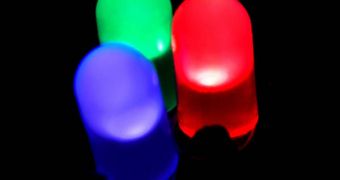Over the past few years, concerns about the environmental impact of incandescent light bulbs have generated furious debates among scientists and policy makers in regards to their efficiency and the carbon footprint they leave behind. These talks have eventually led to a new legislation, which has phased out conventional light bulbs and has moved for their replacement with compact fluorescent ones (CFLs). But it would appear that this new class of light-generating devices will have a very short life, as LEDS are catching on very fast.
The thing about regular, incandescent bulbs is that they only convert about five percent of the electricity that moves through them into visible light. CFLs, on the other hand, are very efficient in this regard, and process about 20 percent of the electricity. However, while their average lifetime beats that of a regular bulb hands down, concerns still remain on their impact on human health, as well as on the environment. Many say that the mercury they contain could pollute the soil, if they are improperly disposed of.
Conversely, LEDs have the ability to change 30 percent or more of the electricity they consume into light, which obviously makes them the most economic choice for standard lighting, for homes, offices, and any other such structures. The main problem is that one LED, for example, makes very little light when compared with a CFL, and it also generates it in colors. Creating white light from an LED is a very difficult task, and there are currently only two ways of doing that.
One involves combining multiple diodes of various colors in the same “bulb,” as certain color combinations appear as white to the human eye. The other option is to use blue LEDs and cover them in phosphorescent dye, which absorbs some of the blue light and converts it into an amber one. The combination again appears as white to the human eye, NewScientist reports.
Researchers at the Chinese Academy of Science have now come up with a way of generating more light from a single LED, by using an organic type of diode, known as WOLED. Because the substrate it uses is organic, as in a dye, they have a very short life span. So, researcher Dongge Ma, from the Changchun Institute of Applied Chemistry, has devised a way around that, by constructing two white-light layers in a single diode. This allows them to operate in a series. “The stacked structure allows higher brightness at lower current,” Reata Research Electronics Engineer Paul Burrows explained.

 14 DAY TRIAL //
14 DAY TRIAL //